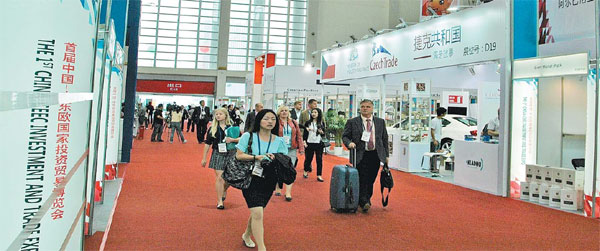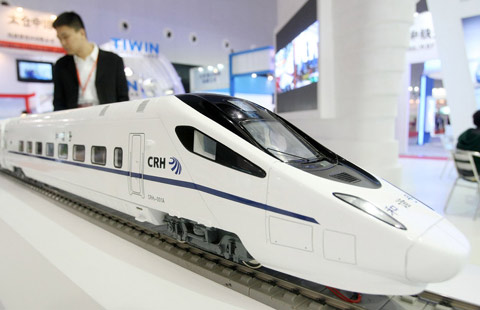Top official hails trade performance
Updated: 2015-06-12 06:41
By Shi Xiaofeng and Ma Zhenhuan(China Daily Europe)
|
|||||||||||
But China and Central and Eastern European countries can do more, he says
Remarkable results have been achieved in trade between China and Central and Eastern European countries, a top Chinese official says.
"The previous trade imbalance between China and these countries has been greatly reduced, and trade has grown over the past three years," said State Councilor Yang Jiechi at the China-Central and Eastern European Countries Forum on Cooperation Development in Ningbo, Zhejiang province, on June 8.
|
Participants walk into the First China-CEEC Investment and Trade Expo in Ningbo in East China's Zhejiang province on June 9. The event is the first comprehensive exposition focused on investment and trade between China and the Central and Eastern European Countries. Ma Zhenhuan / China Daily |
China signed its first trade pact with the countries 65 years ago, when country-to-country transactions, often featuring technological collaboration and transfer, were the main object of trade.
"Such technology contributed hugely to China's economic development," said Ren Hongbing, deputy director of the Chinese Academy of International Trade and Economic Cooperation, a think tank that is part of the Ministry of Commerce.
After China joined the World Trade Organization in 2001 and some Central European countries joined the European Union three years later, bilateral trade began to grow strongly.
Since China launched its Belt and Road Initiative in 2013, its trade ties with Central and Eastern European countries have become more expansive, Ren said, taking in upstream and downstream industrial chains.
Central and Eastern European countries are an important part of the Silk Road Economic Belt and serve as an indispensable part of China's interaction with the world.
These countries help provide access to Chinese companies entering European markets, Ren said.
China should also further expand its imports from Central and Eastern European countries, reducing the trade imbalance and helping to transform the Chinese economy, he said.
"In the manufacturing sector China has launched 16 cooperative industrial zones worldwide that serve as a springboard for Chinese businesses investing abroad. They also help improve the destination countries' economy through more employment. China and Central and Eastern European countries should strive to tap into such sectors in a creative and collaborative way."
China's trade with Central and Eastern European countries exceeded $60 billion last year, and Chinese imports from those countries rose 24.6 percent over the past three years, much of the trade being agricultural and food products. Chinese investment in Central and Eastern European countries is worth more than $5 billion.
One way of promoting trade and exchanges between the two sides is to provide for multi-entry visas that give a fillip to commerce and tourism, Ren said.
He also suggested that the two sides work together to simplify customs clearance and quarantine procedures.
Contact the writers at shixiaofeng@chinadaily.com.cn
(China Daily European Weekly 06/12/2015 page21)
Today's Top News
Zhou Yongkang sentenced to life in prison
Kiev announces new round of peace talks on Ukraine crisis
Greece, EU powers agree to step up debt talks as crunch looms
EU sanctions hamper Italian-Russian commercial ties: Putin
Suu Kyi begins groundbreaking visit
G7 'ignore the facts over South China Sea'
British PM hails 'golden year' in UK-China relations
China's new rail giant bags first overseas deal from India
Hot Topics
Lunar probe , China growth forecasts, Emission rules get tougher, China seen through 'colored lens', International board,
Editor's Picks

|

|

|

|

|

|







